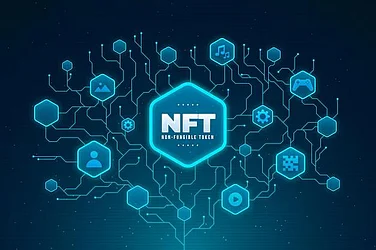Blockchain is the underlying network of almost all the cryptocurrency networks. Blockchain is not an element but the whole framework through which digital currencies can be, exist, and evolve. Blockchain is a distributed ledger technology that maintains records, verifies, and stores transactions in a network of nodes. Blockchain eliminates central control, and it is a system of distrust where cryptographic protocols and consensus algorithms govern interaction.
When referring to crypto infrastructure, here what is to be understood is that blockchain is not merely a path through which cryptocurrencies pass; blockchain is the origin behind ensuring reliability, transparency, and security of the entire crypto infrastructure. Without blockchain, the whole idea of decentralization is gone, and digital assets are vulnerable to tampering, absence of transparency, and inefficiency.
Structural Integrity: Blocks, Nodes, and Consensus
The design of the blockchain is reproducible and modular and is built around a set of nodes that continuously authenticate and validate new transactions, data storage blocks, and cryptographic links between them. Every node is replicated with the ledger so that it gets synchronized in updates across the network with no point of failure.
Consensus protocols employed—Proof of Work, Proof of Stake, or otherwise—are central to this architecture. They enable the use of a decentralized group of participants to come to agreement on a universal promise regarding the state of the ledger at any given time without recourse to any central coordination. The consensus validated by rightful authority either through calculation or verification based on stake makes all the transactions insecure, reversible, or illegible.
Blockchain architecture is designed in such a way that it's immune to outside intrusion, low-level tampering, and an entire class of system tamperings. That integrity is what its cryptographic and distributive nature needs to uphold if it's to ensure the currency of the cryptocurrency market.
Smart Contracts and Automation Layers
As the blockchain technology continued to advance, it went beyond being a transaction ledger. The introduction of smart contracts was yet another dimension to the blockchain configuration. Smart contracts are computerized contracts with programmed scripts that cause something to occur when specified conditions are met.
Smart contracts are programmable agreements which remove the human factor and are encoded in the blockchain. Within the system of cryptocurrency, they are an automation platform powering decentralized applications (dApps), decentralized finance (DeFi), and other applications. Their execution on-chain provides a second layer of trust in the fact that everything is answerable to the light, tamper-evident, and open.
Smart contract infrastructure is not a thin blockchain ledger. There must be more optimal consensus mechanisms, greater processing capacity, and environmentally sustainable solutions for scalability. This gave rise to Layer 1 and Layer 2 blockchain architectures, attempting to preserve decentralization but offer performance boosts.
Interoperability and Network Layers
While blockchain is the technology that cryptocurrency is based on, the utility comes from many blockchains sharing data with each other. Interoperability—the capability of various blockchain networks to share data and communicate with each other—has become the hallmark of current crypto infrastructure.
Whereas the current older crypto infrastructure relies on siloed individual systems, the new crypto infrastructure relies on cross-chain comms protocols, bridges, and interoperability-driven frameworks. These enable easy transfer of assets, smart contracts, and information between networks without compromising the essence of decentralization or security.
Underpinning these operations are solid foundations to support APIs, layering protocols, and token standards, all harmoniously working together to enable seamless functionality across sovereign systems. Interoperability drives blockchain from a ledger system to a monolithic networked system that simulates the foundations of a decentralized internet.
Scalability Challenges and Infrastructure Innovation
Although robust, blockchain infrastructure is tainted by irretrievable issues—basically its scalability, latency, and power usage. As networks grow, the supporting architecture needs to handle growing data and transaction loads without compromising decentralization and security.
To address such constraints, technologies such as Layer 2 scaling solutions, sidechains, and sharding are being brought to blockchain infrastructure. The technologies are expected to move computation workload away, reduce transactional costs, and regain network efficiency in general. The solutions come with the challenge of re-building infrastructure and involve multi-dimensional trade-offs in speed, cost, and decentralization.
Scaling isn't just a performance problem—it's an infrastructural necessity that will dictate whether blockchain-based crypto ecosystems scale well in the long run. Construction of next-gen infrastructure that scales without sacrificing on trustlessness continues to be at the top of the agenda for builders and stakeholders.
Security Foundations of Blockchain Infrastructure
Security is the foundation of blockchain architecture. Cryptocurrencies are only as secure as the networks they are constructed on. Blockchain resists attack by cryptographic hashing, digital signatures, and consensus mechanisms that guarantee protection against tampering, double spending, and access without authorization.
Security of the blockchain infrastructure functions on several layers—ranging from peer-to-peer networking to protocol-layer encryption and transaction authentication. All these work in concert to create a secure platform where the integrity of the data is continuously verified and stored via the network itself.
Aside from such external threats, smart contract vulnerability, node failure, and inadequate governance frameworks can be exploited to weaken blockchain infrastructure integrity on the inside. To avoid this, quality software engineering, frequent auditing, and good governance frameworks must be attained in a combination.
Looking Ahead: Constructing Infrastructure in a Decentralized Future
Blockchain is not an experimental tech anymore, it's global infrastructure. As the cryptos move more and more into financial infrastructures and digital economies, the blockchain infrastructure they are constructed upon must be ready to support more complexity and demand with much focus.
Tomorrow's infrastructure will be green, modular, and constituent. From permissionless networks to hybrid infrastructures with private chains, the realm of blockchains is racing outward. And still, the vision remains at the core: decentralized, secure, transparent infrastructure that liberates users and averts central control.

























